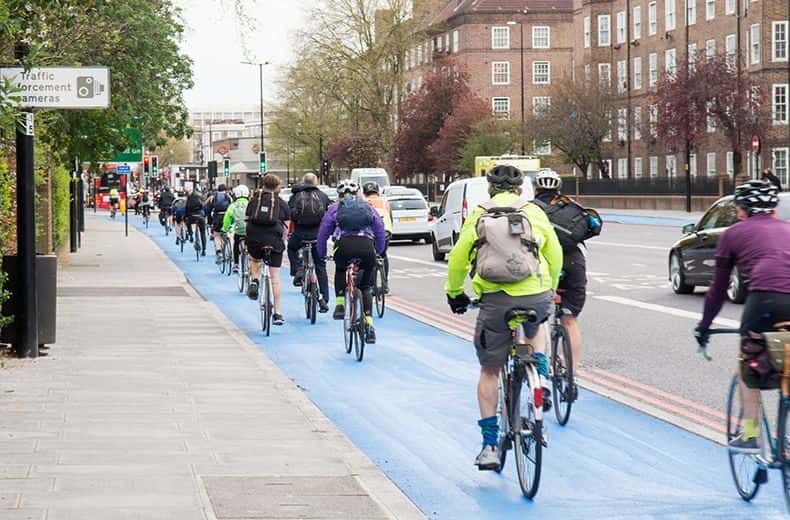Measures including a £250 million package for pop-up bike lanes, wider pavements and cycle and bus-only streets aim to provide for double the number of people expected to be walking and pedalling to work by 2025.
Mr Shapps said: “Whilst it’s crucial that we stay at home, when the country does get back to work we need to ask those people to carry on cycling or walking and for them to be joined by many others as well.”
Just a 5% increase in cycling would save 8 million car journeys, 9 million rail journeys and 13 million bus journeys.
He added: “This £2 billion package represents the biggest investment in cycling and walking by any British government.”
The Transport Secretary continued: “Even with public transport recovering to full service, once you take into account the two metre social distancing rule there will only be effective capacity for one in 10 passengers in many parts of our network.”

RAC sale – up to 33% off*
• Roadside cover from £5.29 a month†
• We get to most breakdowns in 60 mins or less
• Our patrols fix 4/5 breakdowns on the spot

Transport for London confirmed that they “will only be able to carry around 13–15 per cent of the normal number of passengers on the Tube and bus networks, even when 100 per cent of services are operating once again over time.”
Head of Roads Policy at RAC, Nicholas Lyes said: “We welcome the Government’s approach to increasing safe cycling and active travel for people to get about, particularly as concerns about the safety of using public transport are likely to persist for some time.”
A cycling plan to be unveiled in June includes a new voucher scheme for bike repairs and maintenance and extra funding for the NHS, with GPs being asked to prescribe cycling to get the nation fitter.
Ministers will work closer with employers to increase uptake in the cycle to work scheme, which already allows employees to save 25 to 39% of the cost of a new bike.
The car will continue to play a vital role, and £10 million will be invested in electric charging points and accelerating pot-hole repairs.
Mr Lyes said: “People will inevitably return to the comfort and convenience of their vehicles for some journeys when lockdown restrictions are eased, especially where they need to cover longer distances or have a longer commute.
“The needs of all road users must therefore be carefully considered.”
- RAC lockdown car care: how to look after your car during the coronavirus crisis
- How to clean your car interior to reduce the risk of spreading coronavirus (COVID-19)
- Coronavirus (COVID-19): Answering drivers’ questions
- PM urges drivers to be courteous towards cyclists as ‘cycling and walking revolution’ kicks off
- Government announces £25bn improvements to English roads – what will it be spent on?
- Lorry driver jailed for killing cyclist hidden by cluttered dashboard
- Full and interim car service
E-scooters also feature in the proposals, as their trials will be extended across the country and rental schemes made more widely available.
RAC spokesperson Mr Lyes said: “E-scooters could provide that alternative for short trips, though their safe use must always be the number-one priority.
“The Department for Transport might also need to look at changes to the Highway Code to accommodate new forms of road transport.”
How do you think your commute will change once you go back to work? Let us know in the comments.
Get 30 driving tips that will save you money
Running a car isn’t cheap, but there are some easy things you can do to keep your costs down. Get these tips and more useful driving articles sent straight to your inbox now.














